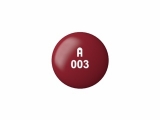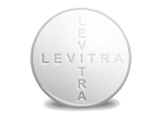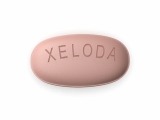Amoxicillin and clavulanate potassium tablets
Amoxicillin and clavulanate potassium tablets are a combination antibiotic used to treat a variety of bacterial infections, including respiratory tract infections, skin infections, and urinary tract infections.
It's important to know that amoxicillin and clavulanate potassium tablets should only be used for bacterial infections, and not for viral infections such as the common cold or flu.
When taking this medication, it's important to follow the prescribed dosage and complete the full course of treatment, even if symptoms improve. Stopping the medication early may result in the infection returning or becoming more difficult to treat.
As with any medication, there are potential side effects to be aware of. Common side effects include diarrhea, nausea, and vomiting. If you experience any severe or unusual side effects, it's important to seek medical attention immediately.
If you have a history of allergic reactions to any antibiotics, or if you have liver or kidney disease, it's important to inform your doctor before taking this medication.
In conclusion, amoxicillin and clavulanate potassium tablets are an effective treatment option for bacterial infections, but it's important to use them only as prescribed and to be aware of potential side effects.
Important Information About Amoxicillin and Clavulanate Potassium Tablets
What is Amoxicillin and Clavulanate Potassium?
Amoxicillin and Clavulanate Potassium Tablets are a combination antibiotic used to treat bacterial infections in the body. The tablets contain amoxicillin, which is a penicillin-type antibiotic, and clavulanate potassium, which helps protect against the development of antibiotic resistance.
How Does it Work?
Clavulanate potassium works by preventing the breakdown of amoxicillin by beta-lactamase enzymes produced by certain bacteria. By protecting amoxicillin from degradation, it enhances its effectiveness against bacteria, ensuring that the infection is eradicated.
What are the Side Effects?
While Amoxicillin and Clavulanate Potassium Tablets are generally safe for most people, they can cause side effects. Common side effects include diarrhea, nausea, vomiting, and rash. More severe effects include liver damage and allergic reactions. It's important to talk to your healthcare provider if you experience any unusual symptoms while taking this medication.
How to Take
The tablets should be taken with a full glass of water, either with food or on an empty stomach, as directed by your healthcare provider. It's important to take the full course of the medication, even if you feel better after a few days. Stopping the medication early can cause the infection to return and make it more difficult to treat.
Conclusion
Overall, Amoxicillin and Clavulanate Potassium Tablets can be an effective treatment for bacterial infections when used properly. It's important to follow your healthcare provider's instructions and report any unusual symptoms to ensure the best possible outcome.
What is Amoxicillin and Clavulanate Potassium?
Overview
Amoxicillin and Clavulanate Potassium is a combination antibiotic medication used to treat bacterial infections. It contains two active ingredients; Amoxicillin, which belongs to a class of antibiotics called penicillins, and Clavulanate Potassium, which helps prevent bacteria from becoming resistant to the antibiotic.
Indications
Amoxicillin and Clavulanate Potassium is used to treat a variety of bacterial infections including respiratory, urinary tract, skin, and dental infections. It is also used to treat infections caused by beta-lactamase-producing strains of bacteria which are normally resistant to amoxicillin alone.
Dosage and Administration
The dosage of Amoxicillin and Clavulanate Potassium depends on the severity of the infection and the patient's age and weight. It is usually taken orally, with or without food, every 8-12 hours. The duration of treatment depends on the type and severity of the infection.
- The medication should be taken at evenly spaced intervals to maintain a consistent level in the body.
- It is important to complete the full course of the medication, even if symptoms improve before the course is finished.
- If a dose is missed, it should be taken as soon as possible. However, if it is almost time for the next dose, the missed dose should be skipped and the regular dosing schedule resumed.
Precautions and Side Effects
Amoxicillin and Clavulanate Potassium can cause side effects such as diarrhea, nausea, vomiting, and skin rashes. It can also rarely cause more serious side effects such as liver damage, allergic reactions, and blood disorders. It is important to inform your doctor of any allergies or medical conditions before starting this medication.
It should be used with caution in patients with liver disease or kidney disease. It may also interact with other medications, so it is important to inform your doctor of all medications you are currently taking.
Conclusion
Amoxicillin and Clavulanate Potassium is an effective treatment for bacterial infections and is widely prescribed. It should be used with caution in certain patient populations and side effects should be closely monitored. If you have any questions or concerns about this medication, speak to your doctor or pharmacist.
How Does Amoxicillin and Clavulanate Potassium Work?
Amoxicillin and Clavulanate Potassium Mechanism of Action
Amoxicillin and Clavulanate Potassium is an antibiotic medication that belongs to the class of Aminopenicillins. The drug is a combination of two active substances: amoxicillin and clavulanate potassium. Amoxicillin works by inhibiting the synthesis of bacterial cell walls, which leads to the destruction of bacterial cells. Clavulanate potassium, on the other hand, is a beta-lactamase inhibitor that helps prevent bacterial resistance to antibiotics.
Amoxicillin and Clavulanate Potassium Uses
Amoxicillin and Clavulanate Potassium is primarily used to treat bacterial infections, such as pneumonia, urinary tract infections, skin infections, and infections of the ears, nose, and throat. The drug is also prescribed for dental infections and infections caused by susceptible strains of beta-lactamase-producing bacteria.
Precautions and Side effects of Amoxicillin and Clavulanate Potassium
Like other medications, Amoxicillin and Clavulanate Potassium has precautions and possible side effects. Patients who have allergic reactions to penicillin or cephalosporin should not take Amoxicillin and Clavulanate Potassium. Side effects of this medication may include diarrhea, stomach pain, and vomiting. In rare cases, patients may develop a severe allergic reaction, resulting in anaphylaxis, a life-threatening condition.
- Take the medication as directed by your doctor.
- Do not share your medication with others.
- Do not take Amoxicillin and Clavulanate Potassium if you have liver or kidney disease.
- If you are pregnant or breastfeeding, talk to your doctor before taking Amoxicillin and Clavulanate Potassium.
In conclusion, Amoxicillin and Clavulanate Potassium is a powerful antibiotic medication that works by inhibiting the bacterial cell wall synthesis. This medication is effective in treating bacterial infections, but like all medications, it has potential side effects. Patients should take the medication as directed by their doctor and seek medical attention if they experience any adverse reactions.
Who Can Use Amoxicillin and Clavulanate Potassium?
People with Bacterial Infections
Amoxicillin and clavulanate potassium tablets are antibiotic medications that are effective against certain bacterial infections. These include infections in the respiratory tract, skin, urinary tract, and ears. If you are suffering from any of these bacterial infections, then your doctor may prescribe amoxicillin and clavulanate potassium tablets as a treatment option.
Adults and Children
Amoxicillin and clavulanate potassium tablets are safe for both adults and children to use, although the dosage may differ depending on the age and weight of the patient. If your child has a bacterial infection, it is important to seek medical advice from a pediatrician before administering any medication.
Individuals with Allergies or Sensitivity to Penicillin
Amoxicillin is part of the penicillin family of antibiotics, so if you have a known allergy or sensitivity to penicillin, you should not use amoxicillin and clavulanate potassium tablets. It is important to inform your doctor of any allergies or sensitivities you may have before starting any new medication.
Pregnant Women
While amoxicillin is generally considered safe for use during pregnancy, there may be some risks associated with its use. Pregnant women should always consult with their doctor before taking any medication, including amoxicillin and clavulanate potassium tablets.
Individuals with Liver or Kidney Disease
Individuals with liver or kidney disease may need to have their dosage adjusted when using amoxicillin and clavulanate potassium tablets. It is important to inform your doctor of any pre-existing medical conditions before starting any new medication.
Conclusion
Amoxicillin and clavulanate potassium tablets are effective antibiotics that can be used to treat a variety of bacterial infections in both adults and children. However, as with any medication, it is important to inform your doctor of any pre-existing medical conditions or allergies you may have before starting treatment.
What Are the Common Side Effects of Amoxicillin and Clavulanate Potassium?
Gastrointestinal Distress
One of the most common side effects of taking amoxicillin and clavulanate potassium tablets is gastrointestinal distress. This can include diarrhea, abdominal pain, and nausea. If you experience any of these symptoms, it is important to stay hydrated and contact your healthcare provider. They may suggest anti-diarrhea medication or other treatment options.
Allergic Reactions
Some individuals may experience an allergic reaction to amoxicillin and clavulanate potassium. Signs of an allergic reaction can include hives, rash, itching, difficulty breathing, and swelling of the face, lips, tongue, or throat. If you experience any of these symptoms, seek medical attention immediately. In some cases, severe allergic reactions can be life-threatening.
Other Side Effects
In addition to gastrointestinal distress and allergic reactions, other possible side effects of amoxicillin and clavulanate potassium include headache, dizziness, insomnia, and vaginal yeast infections. It is important to discuss any symptoms or concerns with your healthcare provider. They can help you determine if the benefits of taking this medication outweigh the potential risks.
If you experience any side effects while taking amoxicillin and clavulanate potassium tablets, it is important to let your healthcare provider know right away. They can help you determine the best course of action and may suggest alternative medications or treatment options.
Always take medication as directed and talk to your healthcare provider if you have any questions or concerns.
What Precautions Should You Take When Using Amoxicillin and Clavulanate Potassium?
1. Inform Your Doctor About Your Medical History
Before taking amoxicillin and clavulanate potassium tablets, inform your doctor about any medical conditions you have. This includes allergies, kidney disease, liver disease, and a history of diarrhea caused by antibiotics. Your doctor may need to adjust your dosage or monitor you more closely.
2. Follow Dosage Instructions Carefully
It is important to follow the dosage instructions provided by your doctor or pharmacist when taking amoxicillin and clavulanate potassium tablets. Taking too much medication or using it for too long can increase your risk of side effects or lead to antibiotic resistance. If you miss a dose, take it as soon as possible and continue with your regular dosing schedule.
3. Avoid Alcohol and Certain Foods
Do not consume alcohol or certain foods while taking amoxicillin and clavulanate potassium tablets. Alcohol can increase your risk of side effects, such as nausea and dizziness. Certain foods, such as dairy products, can also decrease the effectiveness of the medication.
4. Monitor For Side Effects
Monitor your symptoms while taking amoxicillin and clavulanate potassium tablets. If you experience any side effects, such as allergic reactions, severe diarrhea, or liver problems, contact your doctor immediately. Your doctor may need to adjust your dosage or prescribe a different medication.
5. Use Birth Control
Amoxicillin and clavulanate potassium tablets can decrease the effectiveness of birth control pills. If you are taking birth control, use an additional form of contraception, such as condoms, while taking this medication.
Overall, it is important to take precautions when using amoxicillin and clavulanate potassium tablets. By following these guidelines and consulting with your doctor or pharmacist, you can reduce the risk of side effects and maximize the benefits of this medication.
How Should You Take Amoxicillin and Clavulanate Potassium?
1. Take the medication as prescribed
It is important to take amoxicillin and clavulanate potassium exactly as prescribed by your doctor. Do not stop taking the medication even if you feel better, as it may lead to a relapse or antibiotic resistance.
2. Take with food
Amoxicillin and clavulanate potassium should be taken with food to help prevent stomach upset. It is recommended to take the duo with a meal or snack, ideally at the same time each day.
3. Drink plenty of water
Drinking plenty of water with your medication can help flush out any toxins that may be present in your body. This can help prevent any potential side effects from the medication.
4. Store properly
Amoxicillin and clavulanate potassium should be stored at room temperature away from moisture and heat. Be sure to keep the medication in its original container, with the lid tightly closed.
5. Finish the full course of medication
It is important to finish the full course of medication, even if you feel better. Stopping the medication too soon can lead to the return of the infection or developing antibiotic resistance.
6. Consult your doctor if you experience any side effects
If you experience any allergic reactions or side effects while taking amoxicillin and clavulanate potassium, such as difficulty breathing, rash, or swelling, stop taking the medication immediately and consult your doctor.
- Do not share your medication with others
- Do not take more or less medication than prescribed
In Conclusion
Taking amoxicillin and clavulanate potassium correctly is essential for treating bacterial infections effectively. Remember to take the medication as prescribed, with food and water, and to finish the full course of treatment. Always consult your doctor if you experience any side effects or have any concerns about your medication.
Where Can You Buy Amoxicillin and Clavulanate Potassium?
Online Pharmacies
One of the most convenient ways to buy Amoxicillin and Clavulanate Potassium is through online pharmacies. You can easily place an order online and have the medication delivered to your doorstep. Make sure to choose a reputable online pharmacy and look out for the FDA approval seal on the website.
Local Pharmacies
If you prefer to buy medications in person, you can visit your local pharmacy. Some pharmacies may require a prescription from your doctor, so make sure to bring it with you. It is always recommended to call ahead and check if the pharmacy has the medication in stock before making a trip.
Medical Supply Stores
Another option is to visit a medical supply store that carries pharmaceuticals. These stores typically sell a wide range of medical supplies, including medications like Amoxicillin and Clavulanate Potassium. Be sure to check the store’s hours and availability before visiting.
Medical Clinics
You may also be able to purchase Amoxicillin and Clavulanate Potassium from your healthcare provider’s clinic. Some clinics have a pharmacy on-site where you can purchase medications directly. This can be a convenient option if you need to see a doctor for a prescription and also require the medication.
- Online pharmacies offer convenience and easy access
- Local pharmacies may require a prescription and may be out of stock
- Medical supply stores carry pharmaceuticals and medical supplies
- Medical clinics may have a pharmacy on-site
Follow us on Twitter @Pharmaceuticals #Pharmacy
Subscribe on YouTube @PharmaceuticalsYouTube





Be the first to comment on "Amoxicillin and clavulanate potassium tablets"